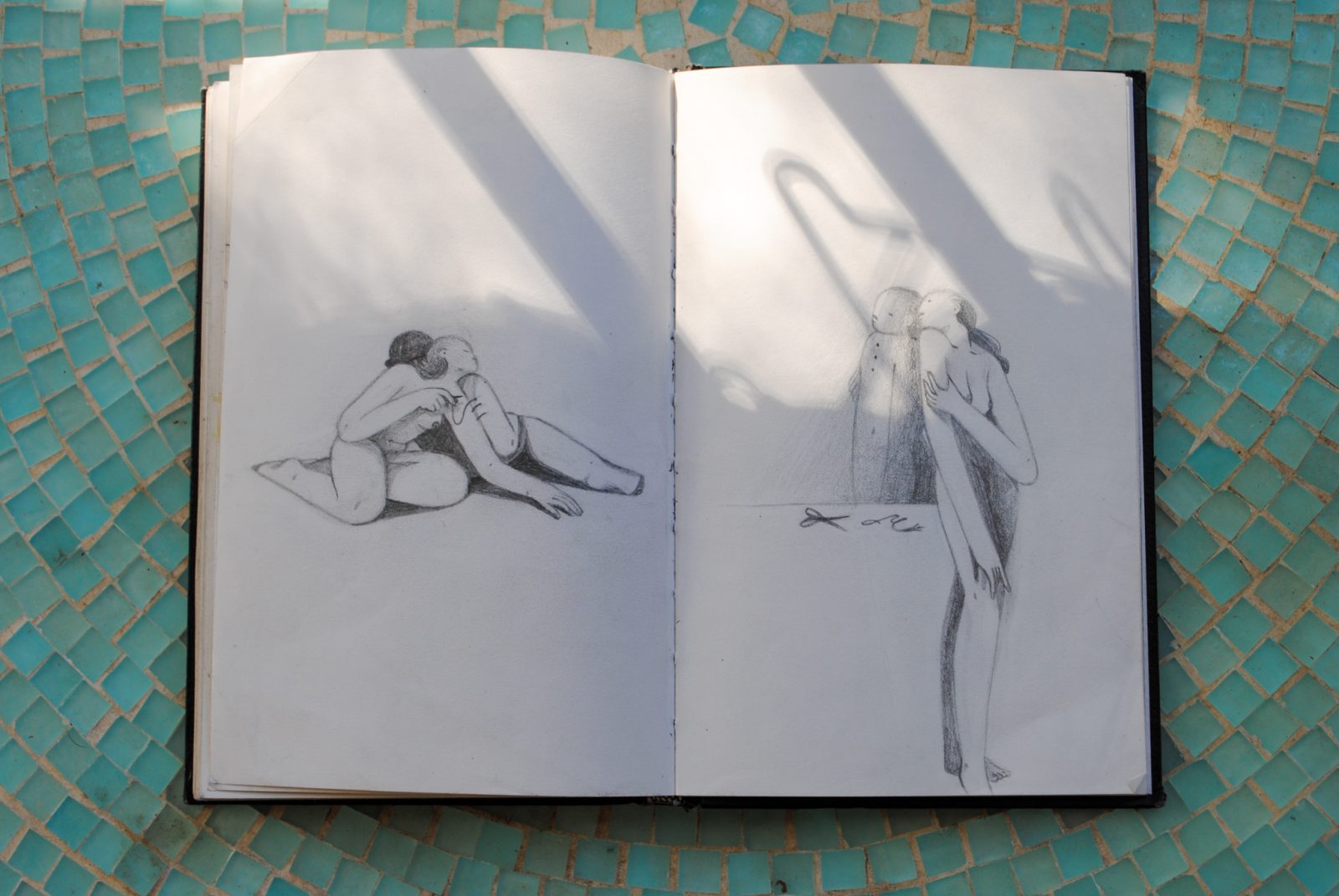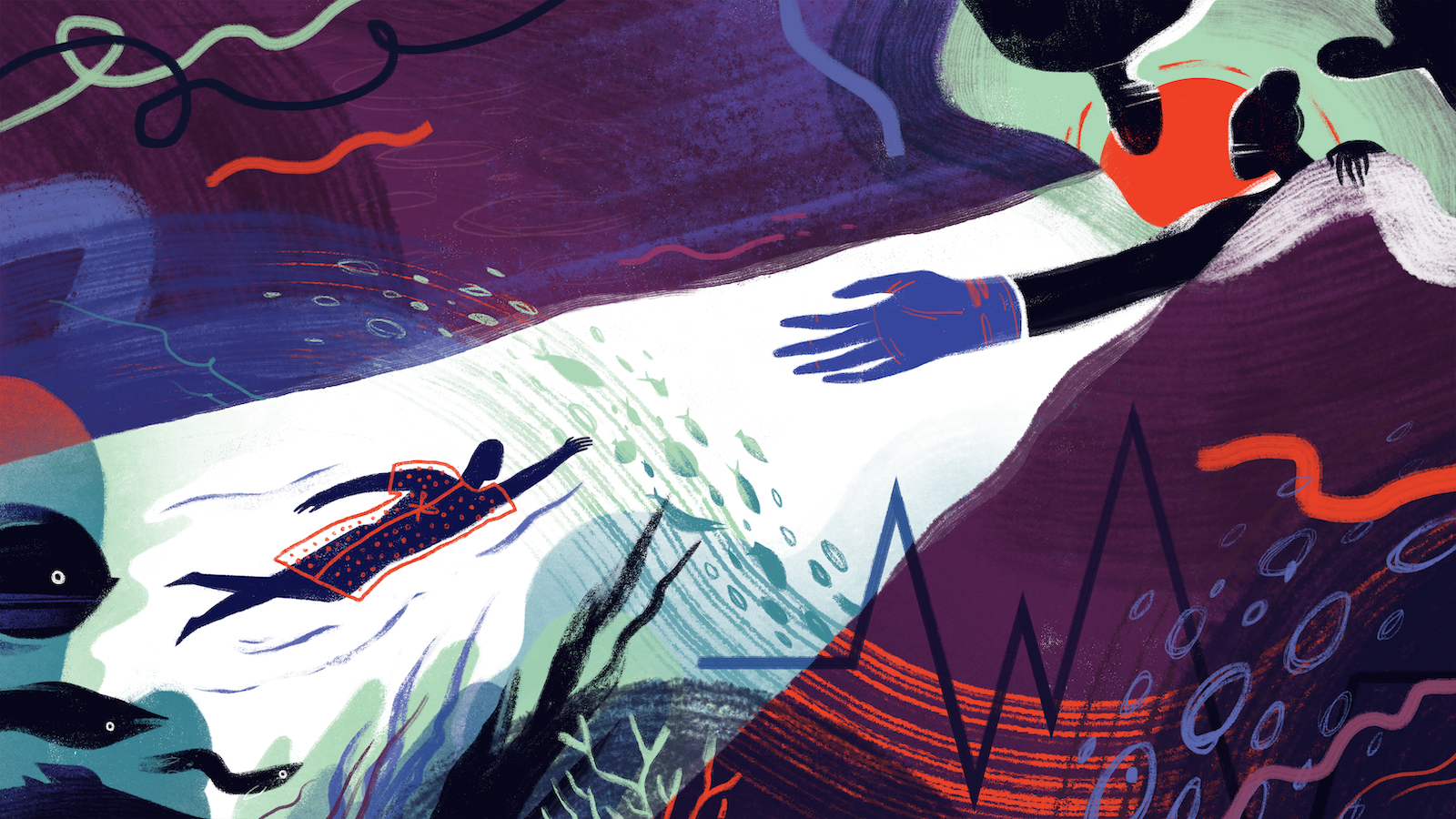Everyone is creative. Whether you’re a painter, a woodworker or an accountant—we all have our own ways of engaging with creativity every day. That’s why we’re partnering with Bombay Sapphire, to celebrate their commitment to help everyone find their canvas. Here, we conclude our series showcasing six different artists with Bay Area illustrator Sara Wong.
Sara Wong’s illustrations have lives of their own. Each pulses with emotions—some familiar, some strange—but each fully realized in every stroke of her pen. Here, we chat with the artist—who besides freelancing for dream clients like NPR and The Atlantic, spends her days as an art director for Facebook—about what it’s like to be an artist in tech and how dreaming up book covers keeps her creative.
Hi Sara! Before we dive in, could you introduce yourself and your work?
Of course! I’m an illustrator living in the bay area and currently working at Facebook. I freelance on the side, primarily for the editorial sphere. I’m most interested in emotional storytelling.
Where did you grow up? What was your upbringing like?
I grew up in San Diego! Life was sunny, but I’ve always been on the introverted side so drawing came naturally as a way to spend my time. I’m lucky enough to have very supportive parents so I had my share of extracurricular art classes over the years.
Is your family artistic? How did you first discover your passion for art?
Actually no, not in the strictest sense—my dad is a doctor and my mom a nurse. But my earliest, “what is that??” memory is of looking at the illustrations in my children’s books and being fascinated that each book could look so different. I was really taken by the idea that these pictures were made by someone and that sort of set me off to make my own.
“Art is a uniquely powerful storytelling tool precisely because of its ability to put the viewer in the story and to ask them to engage with it emotionally.”
I read that you like to illustrate book covers as a creative exercise. How do you choose the books? Have you ever gotten any traction on potentially having an illustration published?
I think I’ve only ever chosen Cormack McCarthy books, and that’s simply because I like his books best. I have a terrible memory so I will reread them fairly often and, if I have the time, will feel the need to keep dwelling on those themes and feelings—creating a book cover is a way for me to ruminate creatively, in a sense. I haven’t been called to illustrate a book cover IRL, so if you’re reading this and are in need of a cover artist, call me!
You mention that your work is about “teasing out and amplifying the emotional undertones of stories big and small.” Do you find it easier to illustrate fictional or nonfictional stories? Is there one you prefer to the other?
I would say what inspires me most, and makes a story easier to illustrate, is its emotional power. I’ve definitely worked on my share of nonfiction stories that were brutally raw, so I wouldn’t say that there are differences between the genres in that regard.
Something that does sit on my mind, though, is the responsibility to represent those nonfiction stories, and those real people, in an authentic and empathetic way. While that’s a challenge that I enjoy, it means that fictional stories feel more freely malleable because I can interpret and reinterpret the story as I wish. Having a mix of both fictional and nonfictional stories to illustrate has been important for my practice.
Your approach to your work is almost journalistic in nature, in that art helps to tell people’s stories. What do you find are the biggest strengths and weaknesses of art as a story-telling tool?
I think it’s a lot of responsibility for artists, and there are a lot of opportunities for things to go wrong—a clever illustration might be visually stunning but do a complete disservice to the story and the people in it. You also have no control over how others will interpret your art at the end of the day. Different people from different backgrounds might see an illustration with a dog on a leash and come away thinking about animal cruelty where you just intended for warmth and cuteness (and this particular example is a real one!). Successfully utilizing art for journalistic storytelling requires that you be cognizant of the power structures in our society and approach every project with a deep well of empathy, at a minimum.
All that said, art is a uniquely powerful storytelling tool precisely because of its ability to put the viewer in the story and to ask them to engage with it emotionally.

You currently work as an Art Director at Facebook—now, this doesn’t need to be specific to Facebook but, in the tech world at large, what are the biggest opportunities and struggles for artists digitally?
Based on both my experiences and the experiences of friends throughout the industry, I would say it can be difficult to bring the full extent of the creative process to the tech office—which might have been operating on fundamentally different values before the need for a creative presence was determined. A good portion of my time is spent educating others on the value of art and how it might benefit their work. It is worth noting that those same people often become your biggest proponents!
When you can meld the mindsets together, there are unique opportunities to instill creativity and construct internal creative processes—and a sheer amount of resources to do so—that an artist might not normally have.
Where do you see art and technology moving in the future?
I think fine artists are at the forefront (as they usually are, with most things) of exploring this and how we can create different sensory experiences with the help of technology. I expect that over time, more and more of that will bleed into the commercial space, until we are no longer creating static pictures but crafting pieces that will completely immerse the viewer.
Do you have any passion projects you hope to one day pursue? Or currently are pursuing?
I would love to create a full series of illustrated movie posters—the main character in The Mist who sits in his attic painting posters basically has my dream job.
See More Sara Wong

Comments